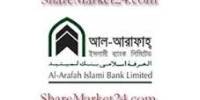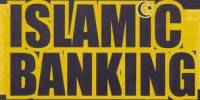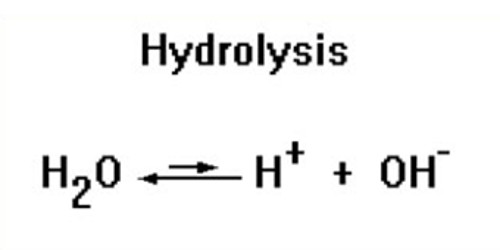History of Banking Industry:
The Pakistani banking system at independence 14 August 1947 consisted of two branch offices of the former State Bank of Pakistan and seventeen large commercial banks, two of which were controlled by Bangladeshi interests and three by foreigners other than West Pakistanis. There were fourteen smaller commercial banks.
Virtually all banking services were concentrated in urban areas. The newly independent government immediately designated the Dhaka branch of the State Bank of Pakistan as the central bank and renamed it the Bangladesh Bank. The bank was responsible for regulating currency, controlling credit and monetary policy, and administering exchange control and the official foreign exchange reserves.
The Bangladesh government initially nationalized the entire domestic banking system and proceeded to reorganize and rename the various banks. Foreign-owned banks were permitted to continue doing business in Bangladesh.
The insurance business was also nationalized and became a source of potential investment funds. Cooperative credit systems and postal savings offices handled service to small individual and rural accounts. The new banking system succeeded in establishing reasonably efficient procedures for managing credit and foreign exchange.
The primary function of the credit system throughout the 1970s was to finance trade and the public sector, which together absorbed 75 percent of total advances.The government’s encouragement during the late 1970s and early 1980s of agricultural development and private industry brought changes in lending strategies. Managed by the Bangladesh Krishi Bank, a specialized agricultural banking institution, lending to farmers and fishermen dramatically expanded.
The number of rural bank branches doubled between 1977 and 1985, to more than 3,330. Denationalization and private industrial growth led the Bangladesh Bank and the World Bank to focus their lending on the emerging private manufacturing sector. Scheduled bank advances to private agriculture, as a percentage of sects oral GDP, rose from 2 percent in FY 1979 to 11 percent in FY 1987, while advances to private manufacturing rose from 13 percent to 53 percent.
The transformation of finance priorities has brought with it problems in administration. No sound project-appraisal system was in place to identify viable borrowers and projects. Lending institutions did not have adequate autonomy to choose borrowers and projects and were often instructed by the political authorities.
In addition, the incentive system for the banks stressed disbursements rather than recoveries, and the accounting and debt collection systems were inadequate to deal with the problems of loan recovery. It became more common for borrowers to default on loans than to repay them; the lending system was simply disbursing grant assistance to private individuals who qualified for loans more for political than for economic reasons.
The rate of recovery on agricultural loans was only 27 percent in FY 1986, and the rate on industrial loans was even worse. As a result of this poor showing, major donors applied pressure to induce the government and banks to take firmer action to strengthen internal bank management and credit discipline. As a consequence, recovery rates began to improve in 1987.
The National Commission on Money, Credit, and Banking recommended broad structural changes in Bangladesh’s system of financial intermediation early in 1987, many of which were built into a three-year compensatory financing facility signed by Bangladesh with the IMF in February 1987.One major exception to the management problems of Bangladeshi banks was the Grameen Bank, begun as a government project in 1976 and established in 1983 as an independent bank.
In the late 1980s, the bank continued to provide financial resources to the poor on reasonable terms and to generate productive self-employment without external assistance. Its customers were landless persons who took small loans for all types of economic activities, including housing. About 70 percent of the borrowers were women, who were otherwise not much represented in institutional finance.
Collective rural enterprises also could borrow from the Grameen Bank for investments in tube wells, rice and oil mills, and power looms and for leasing land for joint cultivation. The average loan by the Grameen Bank in the mid-1980s was around Tk 2,000 (US$65), and the maximum was just Tk 18,000 (for construction of a tin-roof house). Repayment terms were 4 percent for rural housing and 8.5 percent for normal lending operations.The Grameen Bank extended collateral-free loans to 200,000 landless people in its first 10 years.
Most of its customers had never dealt with formal lending institutions before. The most remarkable accomplishment was the phenomenal recovery rate; amid the prevailing pattern of bad debts throughout the Bangladeshi banking system, only 4 percent of Grameen Bank loans were overdue. The bank had from the outset applied a specialized system of intensive credit supervision that set it apart from others. Its success, though still on a rather small scale, provided hope that it could continue to grow and that it could be replicated or adapted to other development-related priorities.
The Grameen Bank was expanding rapidly, planning to have 500 branches throughout the country by the late 1980s.
Beginning in late 1985, the government pursued a tight monetary policy aimed at limiting the growth of domestic private credit and government borrowing from the banking system. The policy was largely successful in reducing the growth of the money supply and total domestic credit. Net credit to the government actually declined in FY 1986.
The problem of credit recovery remained a threat to monetary stability, responsible for serious resource misallocation and harsh inequities. Although the government had begun effective measures to improve financial discipline, the draconian contraction of credit availability contained the risk of inadvertently discouraging new economic activity.
Foreign exchange reserves at the end of FY 1986 were US$476 million, equivalent to slightly more than two months worth of imports. This represented a 20-percent increase of reserves over the previous year, largely the result of higher remittances by Bangladeshi workers abroad.
Banking process in Bangladesh
The financial system of Bangladesh consists of Bangladesh Bank (BB) as the central bank, 4 State Owned Commercial Banks (SCB), 5 government owned specialized banks, 30 domestic private banks, 9 foreign banks and 29 non-bank financial institutions. Moreover, MRA has given license to 298 Micro-credit Organizations. The financial system also embraces insurance companies, stock exchanges and co-operative banks.
Central Bank and its policies
Bangladesh Bank (BB), as the central bank, has legal authority to supervise and regulate all banks and non-bank financial institutions. It performs the traditional central banking roles of note issuance and of being the banker to the government and banks.
Given some broad policy goals and objectives, it formulates and implements monetary policy, manages foreign exchange reserves and lays down prudential regulations and conduct monitoring thereof as they apply to the entire banking system. Its prudential regulations include, among others: minimum capital requirements, limits on loan concentration and insider borrowing and guidelines for asset classification and income recognition.
The Bangladesh Bank has the power to impose penalties for non-compliance and also to intervene in the management of a bank if serious problem arise. It also has the delegated authority of issuing policy directives regarding the foreign exchange regime.
Monetary Policy
Monetary policy is a set of rules that aims at regulating the supply of money in accordance with predetermined goals or objectives. Monetary policy plays a very dominant role in altering the economic activity and the price level in a country. So, it should be very carefully formulated and implemented in achieving the goals and objectives as outlined in the Bangladesh Bank Order, 1972 below:
- Price stability both internal & external
- Sustainable growth & development
- High employment
- Economic and efficient use of resources
- Stability of financial & payment system
Reserve Management Strategy
Bangladesh Bank (BB) is empowered by section 7A of Bangladesh Bank Order, 1972 (President’s Order No. 127 of 1972) to hold and manage the official foreign exchange reserve of Bangladesh. It maintains its foreign exchange reserve in different currencies to minimize the risk emerging from widespread fluctuation in exchange rate of major currencies and very irregular movement in interest rates in the global money market.
BB has established Nitro account arrangements with different Central Banks. Funds accumulated in these accounts are invested in Treasury bills, repost and other government papers in the respective currencies. It also makes investment in the form of short term deposits with different high rated and reputed commercial banks and purchase of high rated sovereign/supranational/corporate bonds.
Fore Reserve & Treasury Management Department of BB performs the operational functions regarding investment which is guided by investment policy set by the Bib’s Investment Committee headed by a Deputy Governor. The underlying principle of the investment policy is to ensure the optimum return on investment with minimum market risk.
Exchange Rate Policy
Towards liberalization of foreign exchange transactions, a number of measures were adopted since 1990s. Bangladeshi currency, the taka, was declared convertible on current account transactions (as on 24 March 1994), in terms of Article VIII of IMF Article of Agreement (1994).
As Taka is not convertible in capital account, resident owned capital is not freely transferable abroad. Bangladesh adopted Floating Exchange Rate regime since 31 May 2003. Under the regime, BB does not interfere in the determination of exchange rate, but operates the monetary policy prudently for minimizing extreme swings in exchange rate to avoid adverse repercussion on the domestic economy. In the forex market banks are free to buy and sale foreign currency in the spot and also in the forward markets.
Interest Rate Policy
Under the Financial sector reform program, banks are free to charge/fix their deposit (Bank /Financial Institutes) and Lending (Bank /Financial Institutes) rates other than Export Credit. At present, Loans at reduced rates (7%) are provided for all sorts of export credit since January 2004.
With a view to controlling the price hike and ensuring adequate supply of essential commodities, the rate of interest on loan for import financing of rice, wheat, sugar, edible oil (crude and refined), chickpeas, beans, lentils, onions, spices , dates and powder milk has been temporarily fixed to a maximum of 12%. Now, banks can differentiate interest rate up to 3% considering comparative risk elements involved among borrowers in same lending category.
With progressive deregulation of interest rates, banks have been advised to announce the mid-rate of the limit (if any) for different sectors and the banks may change interest 1.5% more or less than the announced mid-rate on the basis of the comparative credit risk. Recently Banks have been advised to upload their deposit and lending interest rate in their respective website.
Capital Adequacy of the Banks
With a view to strengthening the capital base of banks and making them prepare for the implementation of Basel-II Accord, banks are required to maintain Capital to Risk-Weighted Assets ratio 10% at the minimum with core capital not less than 5% effective from December 31, 2007. However, minimum capital requirement (paid up capital and statutory reserve) for all banks will be Tk.200 corer as per Bank Company (Amendment) Ordinance, 2007. Banks having capital shortfall will have to meet at least 50% of the shortfall by June, 2008 and the rest by June, 2009.
Revaluation reserves of held to maturity (HTM) securities (up to 50% of the revaluation reserves) has been added to the components of supplementary capital. Besides, ‘Hedging the price risk of commodity transactions’ has been included in Short-term self liquidating trade related contingencies.
Loan Classification and Provisioning
In order to strengthen credit discipline and bring classification and provisioning regulation in line with international standard, Bangladesh Bank issued a master circular on loan classification and provisioning through BRPD circular no 5 dated June 5, 2006. The revised policy covers an independent assessment of each loan on the basis of objective criteria and qualitative factors which is appended below:
Any Continuous Loan/Demand Loan if not repaid/renewed within the fixed expiry date for repayment will be treated as past due/overdue from the following day of the expiry date. A Continuous Loan/Demand loan/Term Loan which will remain overdue for a period of 90 days or more will be put into the “Special Mention Account (SMA)”. Interest accrued on “Special Mention Account (SMA)” will be credited to Interest Suspense Account, instead of crediting the same to Income Account. A Continuous Loan/Demand loan is classified as ‘Sub-standard’ if it is past due/over due for 6 months or beyond but less than 9 months, classified as Doubtful’ if it is past due/over due for 9 months or beyond but less than 12 months and classified as `Bad/Loss’ if it is past due/over due for 12 months or beyond.
If any installment or part of installment of a Fixed Term Loan is not repaid within the due date, the amount of unpaid installment will be termed as `defaulted installment’. In case of Fixed Term Loans, which are repayable within maximum five years of time- If the amount of ‘defaulted installment’ is equal to or more than the amount of installment due within 6 months, the entire loan will be classified as “Sub-standard”
if the amount is equal to or more than the amount of installment due within 12 (twelve) months, the entire loan will be classified as” Doubtful” and if the amount is equal to or more than the amount of installment due within 18 (eighteen) months, the entire loan will be classified as “Bad/Loss”. In case of Fixed Term Loans, which are repayable in more than five years of time and if the amount of ‘defaulted installment’ is equal to or more than the amount of installment due within 12 (twelve) months, the entire loan will be classified as “Sub-standard”. If the amount is due within 18 (eighteen) months, the entire loan will be classified as “Doubtful” and if the amount is due within 24 (twenty four) months, the entire loan will be classified as “Bad/Loss”.
The Short-term Agricultural and Micro-Credit will be considered irregular if not repaid within the due date as stipulated in the loan agreement. If the said irregular status continues, the credit will be classified as ‘Substandard ‘ after a period of 12 months, as ‘Doubtful’ after a period of 36 months and as ‘Bad/Loss’ after a period of 60 months from the stipulated due date as per loan agreement. Besides, if any situational changes occur in the stipulations in terms of which the loan was extended or if the capital of the borrower is impaired due to adverse conditions or if the value of the securities decreases or if the recovery of the loan becomes uncertain due to any other unfavorable situation, the loan will have to be classified on the basis of qualitative judgment.
If the said irregular status continues, the credit will be classified as ‘Substandard ‘ after a period of 12 months, as ‘Doubtful’ after a period of 36 months and as ‘Bad/Loss’ after a period of 60 months from the stipulated due date as per loan agreement.
As regards the provision, banks are required to maintain General Provision against all categories of loans along with off-balance sheet items in the following manner:
| Particulars | Short Term Agri. Credit and micro credit | Consumer Financing | Small Enterprise Financing | All other Credit | |||
| Other than Housing Finance & Loans for Professionals to set up business | Housing Finance | Loans for Professionals to set up business | |||||
| UC | Standard | 5% | 5% | 2% | 2% | 1% | 1% |
| SMA | – | 5% | 5% | 5% | 5% | 5% | |
| Classified | SS | 5% | 20% | 20% | 20% | 20% | 20% |
| DF | 5% | 50% | 50% | 50% | 50% | 50% | |
| B/L | 100% | 100% | 100% | 100% | 100% | 100% | |
Besides, banks are required to maintain general provision against Off-balance sheet exposures in the following manner:
(i) @ 0.5% provision effective from December 31, 2007 and
(ii) @ 1% provision effective from December 31, 2008.
Foreign Exchange System
On March 24, 1994 Bangladesh Taka (domestic currency) was declared convertible for current transactions in terms of Article VIII of the IMF Articles of Agreement. Consequent to this, current external settlements for trade in goods and services and for amortization payments on foreign borrowings can be made through banks authorized to deal in foreign exchange, without prior central bank authorization.
However, because resident owned capital is not freely transferable abroad Taka is not yet convertible on capital account, some current settlements beyond certain indicative limits are subject to bonfires checks. Direct investments of non-residents in the industrial sector and portfolio investments of non-residents through stock exchanges are reparable abroad, as also are capital gains and profits/dividends thereon. Investment abroad of resident-owned capital is subject to prior Bangladesh Bank approval, which is allowed only sparingly.
MICROFINANCE INSTITUTIONS (MFIs)
The member-based Microfinance Institutions (MFIs) constitute a rapidly growing segment of the Rural Financial Market (RFM) in Bangladesh. Micro credit programs (MCP) in Bangladesh are implemented by various formal financial institutions nationalized commercial banks and specialized banks, specialized government organizations and Non-Government Organizations NGOs.
The growth in the MFI sector, in terms of the number of MFI as well as total period of June 2003 to June 2006 the growth rate was over 70% in terms of horizontal expansion of micro credit borrower. The total coverage of MCP in Bangladesh is approximately 30.09 million borrowers without considering overlapping figures. Table-1 shows the coverage of major institutions in the formal and semi-formal sectors.
Membership was phenomenal during the 1990s and continues till today. Over the
| Table – 1:Coverage of Micro credit Program | ||
| Organization | No. of Borrowers | Outstanding Loan (in million Taka) |
| NGO-MFIs (June 2006) | 18,415,878 | 78,930.57 |
| Grameen Bank (June 2006) | 6908704 | 33235.46 |
| Government Program (December, 2005) | 1,997,240 | 7,710.05 |
| Sub Total | 27,621,573 | 120,493.52 |
| Nationalized Commercial Banks (December, 2005) | 2311150 | 32783.45 |
| Private Banks (December, 2005) | 164113 | 1106.46 |
| Sub Total | 2,475,263 | 33,889.91 |
| Grand Total | 30,096,836 | 154,383.43 |
| Source: Microcredit Regulatory Authority, Grameen Bank | ||
It is estimated that after considering the overlapping problem, which is expected to be over 40%, the effective coverage would be around 18.05 million borrowers. Out of 18.05 million borrowers covered by micro credit program
List of banks in Bangladesh
The commercial banking system dominates Bangladesh’s financial sector. Bangladesh Bank is the Central Bank of Bangladesh and the chief regulatory authority in the sector. The banking system is composed of four state-owned commercial banks, five specialized development banks, thirty private commercial Banks and nine foreign commercial banks. The Nobel-prize winning Grameen Bank is a specialized micro-finance institution, which revolutionized the concept of micro-credit and contributed greatly towards poverty reduction and the empowerment of women in Bangladesh.

















